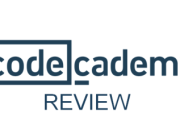Improving MOOC completion rates
 First we need to look at MOOCs completion rate differently
First we need to look at MOOCs completion rate differently
C
ompletion rate is a big topic around MOOCs these days. Some argue that completion rates below 10% is a reference for failure. And other sceptics say MOOCs have been a failure. Others insist on that these number don’t represent much because MOOCs are a great evolution in education.
Are we making statements based on the wrong information? I suggest that we first take a better look at completion rates and then that we focus our energy on how to increase those number. There are always ways to improve the situation..
In traditional universities, we do not measure completion rates by how many applied to university degrees or courses. We do not count the number of students that didn’t attend classes. Neither do we count the number of students that don’t listen. And neither do we count those that are present without being present. You could say that exams are a pinpoint to getting real figures. But if you asked a professor how many understood what they were learning, well… When I had exams where reasoning and understanding was needed (and not repetition), I think failure rates were well over 70%. MOOCs uses the total number of users for marketing purposes. That is both to convince users to try out their platforms (social proof) but also to inflate the numbers for investors. If you use common sense, taking the number of Persister divided by Active users gives you a more truthful number. My calculations give you a rough 10% completion rates (these are motivated learners) + 1-10% who are the ones that would probably be able to pass the course if given an exam at university.Completion rates and Engagement
#1 Provide more information about the courses
[pullquote]
Moocs has made it easy to enroll to top courses, now it’s time to help users find courses that best fit them.
[/pullquote] Many people signup for new courses when they know too little about a specific course; Let’s say a user want to learn about philosophy.He signs up, searches for the most popular philosophy courses that appear. Does it mean the course is a good fit for him? I believe Moocs has made it easy to enroll to top courses, now it’s time to help users find courses that best fit them.
One solution One solution is to have more personalised search functions so that you can filter courses by relevancy.
#2 More flexibility
I’ve been reading about frustrated MOOC users that just don’t have time to follow courses want to follow. Why should there be any time constraints? The point with online learning is to have the flexibility to not be limited by space or “time”. Second, flexibility is one of the most important attributes in choosing to learn online. Third, people learn at different paces.
A simple solution is to offer the same course in two formats. That is one where you would have the possibility to interact with the teacher. And the other is just having the possibility to access the content 365 days a year without access to interaction with professors.
#3 They should motivate their student
[pullquote align=right] Sustaining motivation to learn is strongly dependent on the learner’s confidence in his or her potential for learning. Von Glasersfeld.
[/pullquote] One of the crucial factors for a student learning curve is intrinsic motivation. This is also partly dependent on student’s confidence in his or her’s potential for learning, according to Von Glasersfeld (1989).
Suggestions
Moocs can motivate students with simple methods to show the learning progress, as well as your potential.
1) Retention marketing can be used to send congratulation emails once you finish the class with a recap of what you just achieved. I recently started an online course in coding with Team Treehouse. What I like is that they send me emails like “Wow! You just learn the fundamentals of C!”. It might seem primitive, but it motivated me at least.
2) Showing the detailed progress on each course you take with different milestones has also shown to improve motivations of students.
3) Getting students more involved in a class. Today many classes consist of inactive learning . That is you don’t stimulate your thinking muscle because your are not actively interacting. The main learning is watching videos, reading documents and answering simple Q&A.
MOOCs already have Q&As forums. But Duolingo has taken it to the next level by adding everything mentioned above. It seems to work very well. You see it on the activity level of the community.

I envision an online learning environment where students can become mentors as soon as they’ve reached a certain degree of knowledge. MOOCs should trigger the power of the community to its benefit. Accomplished students could be responsible for new users success. It will also power their level of achievement and motivation.
Learn to learn and adapt
People have different learning styles: The main ones are auditory, visual, kinesthetic as well as “logical”. Most people learn best through combination several senses. My impression is too few people are conscious of what works best for them!
When signing in, MOOCs could offer a quick test where students can find out what they most developed sensory system is.
Then MOOC platform can use that data to find a correlation between sensory systems and completion rates of courses. It is somehow dependent on a large user base to get correct data, but it would allow you to personalize courses on another level.
With that data, you could create course filters to find courses based on which sensory systems courses are best adapted to.
If you like this post and would like to be updated on upcoming articles, you can subscribe to our newsletter.
Sources
1) Harvard, MIT: Despite low completion rates, MOOCs work | The Hechinger Report. 2014. Harvard, MIT: Despite low completion rates, MOOCs work | The Hechinger Report . [ONLINE] Available at: http://hechingerreport.org/content/harvard-mit-despite-low-completion-rates-moocs-work_14495/ . [Accessed 12 December 2014].
Data
2) MOOCs completion rates. 2014.
MOOCs completion rates
. [ONLINE] Available at:
http://www.katyjordan.com/MOOCproject.html
. [Accessed 12 December 2014].
3) Moocs completion rates ‘below 7%’ | News | Times Higher Education. 2014. Moocs completion rates ‘below 7%’ | News | Times Higher Education . [ONLINE] Available at: http://www.timeshighereducation.co.uk/news/mooc-completion-rates-below-7/2003710.article . [Accessed 12 December 2014].
4) MOOCs — Completion Is Not Important – Forbes. 2014. MOOCs — Completion Is Not Important – Forbes . [ONLINE] Available at: http://www.forbes.com/sites/ccap/2014/09/16/moocs-finishing-is-not-the-important-part/ . [Accessed 12 December 2014].
5) Pay No Attention to Supposedly Low MOOCs Completion Rates | EdCentral. 2014. Pay No Attention to Supposedly Low MOOCs Completion Rates | EdCentral . [ONLINE] Available at: http://www.edcentral.org/pay-attention-supposedly-low-mooc-completion-rates/ . [Accessed 12 December 2014].
6) The MOOC Revolution That Wasn’t | TechCrunch. 2014. The MOOC Revolution That Wasn’t | TechCrunch . [ONLINE] Available at: http://techcrunch.com/2014/09/11/the-mooc-revolution-that-wasnt/ . [Accessed 12 December 2014].
7). 2014. . [ONLINE] Available at: http://web.mit.edu/5.95/readings/bloom-two-sigma.pdf . [Accessed 12 December 2014].








Leave A Comment